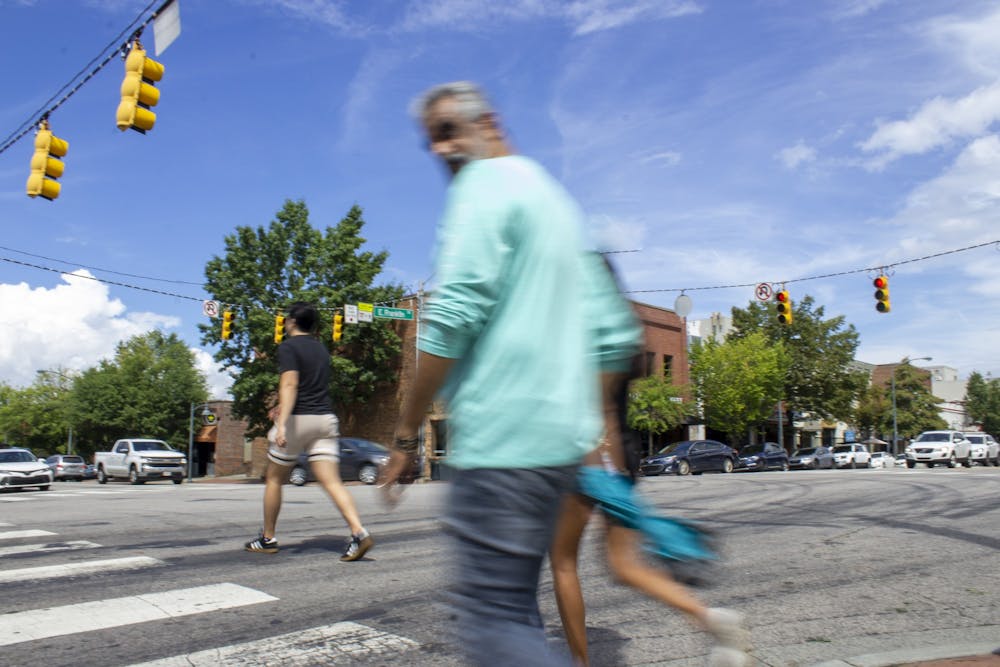John Quinterno, a member of the Chapel Hill Alliance for a Livable Town (CHALT) and an adjunct instructor in the UNC School of Government, said this commitment to managed growth has helped Chapel Hill escape some of the challenges faced by nearby cities like Durham and Raleigh, which he said have grown explosively in recent years.
However, he said that managed growth shouldn't be confused with a lack of growth, and that, in recent years, new construction has primarily been multi-family apartment buildings.
While most houses built in the 2000s were single-family residences, Quinterno said the 2008 recession and changing construction tactics have altered traditional development practices. Beginning in the 2010s, development shifted to predominantly feature large-scale apartment complexes that rent housing to town residents.
“We are now a majority of renters, and a minority of homeowners,” Linda Brown, a coordinator with CHALT, said. “As we build more apartments, that imbalance gets even worse — what kind of community is that going to create?”
Costs and benefits of a denser future
According to the Town’s 2021 Housing Report, construction of residences needs to increase by 35 percent, to around 485 units a year, to account for future workers and students.
As a result, Chapel Hill Mayor Pam Hemminger said the movement toward more densely-constructed housing is both a beneficial and necessary solution. She argued that this move makes better use of expensive land prices in the Triangle and has less of an environmental impact than single-family housing.
“You can’t stop growth, you can only determine what it looks like,” she said. “To not grow isn’t really an option.”
Chapel Hill Town Council member Camille Berry shared many of the same sentiments as Hemminger, particularly in regard to environmental concerns. If Chapel Hill is to remain environmentally conscious, then its citizens need to live smaller and closer together, she said.
However, several members of CHALT, an organization that says it promotes climate-conscious smart growth, transportation and park infrastructure, have argued that the focus on building new housing has caused other critical issues to be ignored.
Brown, for instance, argued new apartment constructions would create urban heat zones and damage the surrounding environment if built without neighboring green spaces.
Even more pressing, they said, were concerns regarding public infrastructure.
To get the day's news and headlines in your inbox each morning, sign up for our email newsletters.
“We’re not paying attention to making sure that people can have a decent quality of life if they move into one of these apartments,” CHALT Coordinator Julie McClintock said. “People say, ‘Oh, it's on the transit line, this is great,’ but if you go to a transit meeting, you find out that Chapel Hill's very stressed in terms of buying buses.”
McClintock said that CHALT’s goal was not to prevent development. She said it is to ensure all types of development, commercial and retail as well as residential, reflect Chapel Hill’s present commitments to public transportation, green practices and affordability.
The Complete Community initiative
With these concerns in mind, Chapel Hill recently introduced the Complete Community initiative, a follow-up to the 2021 Housing Report that envisions the future of the Town’s development.
“'Complete communities' means that you have a diversity of housing types," Hemminger said, "that you have alternative modes of transportation and that you have public green spaces for people and public gathering spaces."
She added that the plan also attempts to reach out to community leaders to gather responses so as to better address concerns and criticisms of current development practices.
In response, McClintock said she felt encouraged by the Town Council’s attempts to reach out, but community feedback must actually be implemented if it is to have any use. Likewise, Brown argued that holding meetings to hear feedback from the community in the middle of the day might make it harder for more economically vulnerable residents to be heard.
However, all parties recognized community outreach and communication as a welcome development — even if challenges remain.
“More complete planning is necessary, as (CHALT has) been talking about, and I think that's a validation of a lot of things that we've been arguing for years,” Quinterno said.
Town members also highlighted collaboration as an important part of future development discussions.
"I think for our Town to continue to advance to be its best version, we will need to hear each other," Berry said.
@harrisonggummel
@DTHCityState | city@dailytarheel.com



